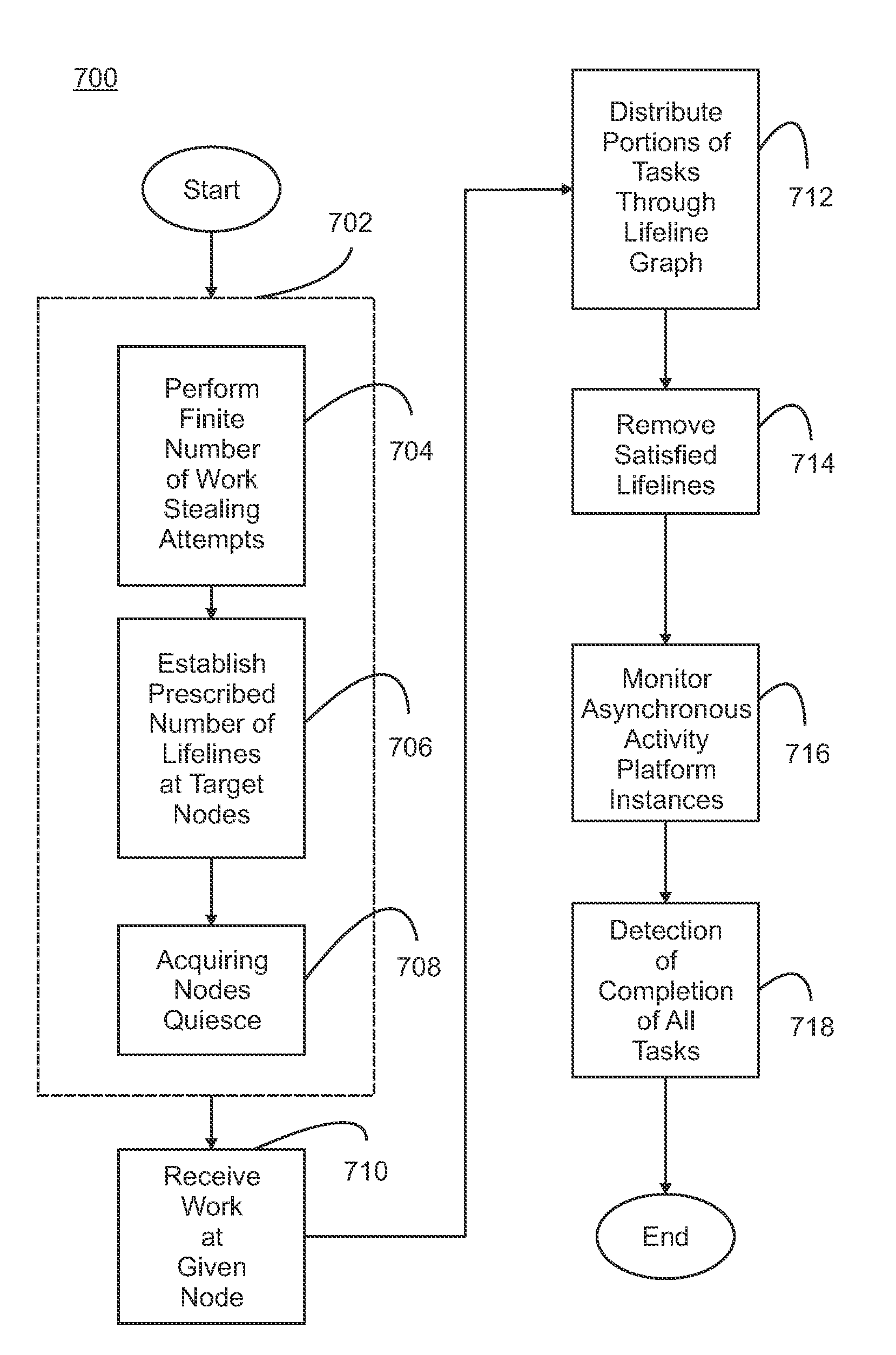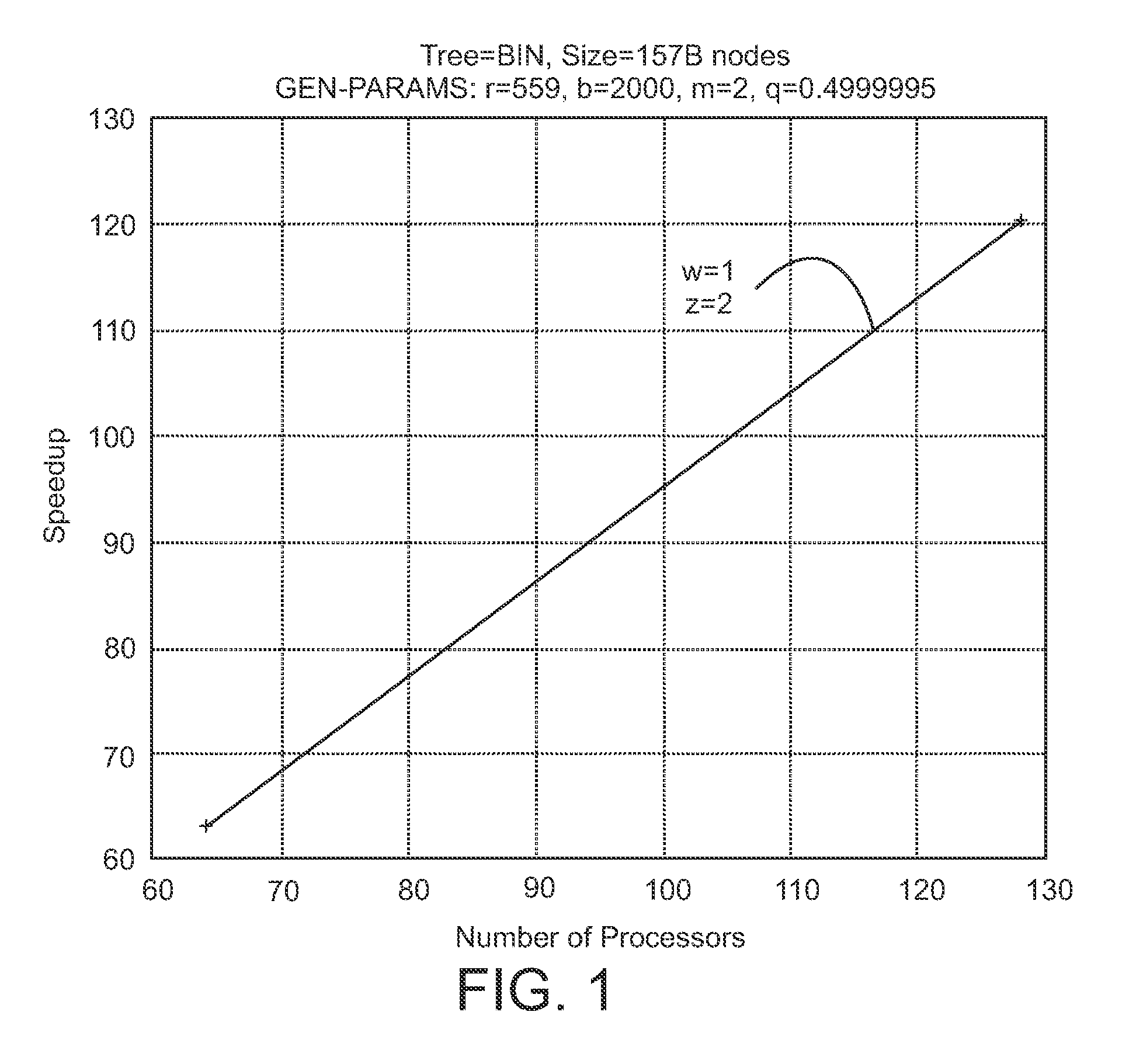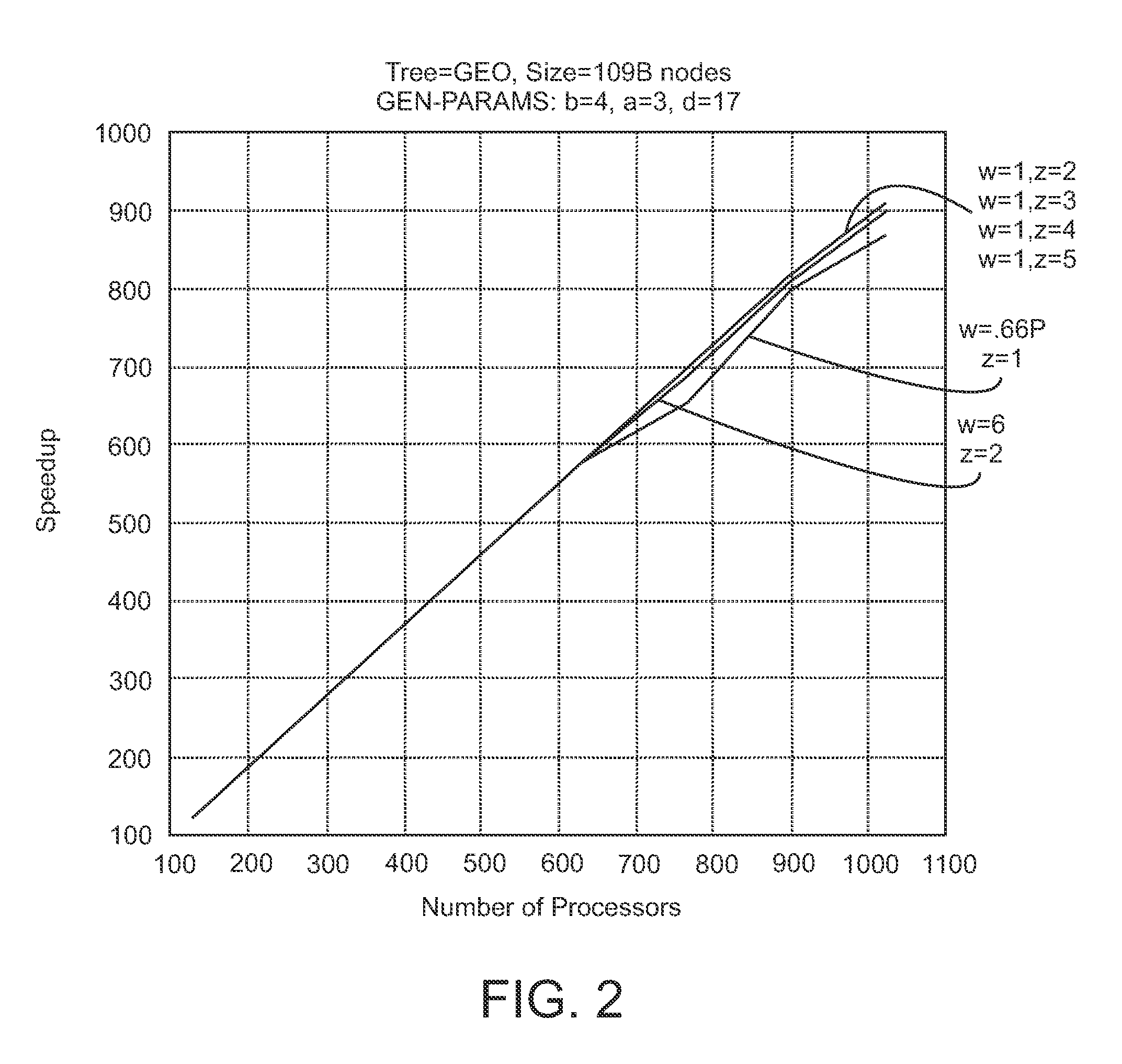Lifeline-based global load balancing
a global load and load technology, applied in the field of distributed memory load balancing, can solve problems such as active termination detection problems, and achieve the effect of prolonging work th
- Summary
- Abstract
- Description
- Claims
- Application Information
AI Technical Summary
Benefits of technology
Problems solved by technology
Method used
Image
Examples
Embodiment Construction
[0023]The emergence of new architectures that emphasize distributed memory, e.g., clouds and commodity clusters, P71H, and BlueGene, provides significant new opportunities for application developers. New application areas such as business analytics and data mining are presented with unparalleled opportunities to deal efficiently with large workloads. However, these exciting opportunities bring new challenges for parallel system designers. The Asynchronous Partitioned Global Address Space (APGAS) programming model provides a useful and convenient framework for stating these problems and their solutions. The parallel processing system is viewed as a collection of places, e.g., nodes, processors or cores, for example in a distributed memory system. Data is partitioned across the places with support for selective replication. In addition to remote data access through one-sided communication primitives, activities, i.e., work, jobs or tasks, can be launched on remote places. This allows ...
PUM
 Login to View More
Login to View More Abstract
Description
Claims
Application Information
 Login to View More
Login to View More - R&D
- Intellectual Property
- Life Sciences
- Materials
- Tech Scout
- Unparalleled Data Quality
- Higher Quality Content
- 60% Fewer Hallucinations
Browse by: Latest US Patents, China's latest patents, Technical Efficacy Thesaurus, Application Domain, Technology Topic, Popular Technical Reports.
© 2025 PatSnap. All rights reserved.Legal|Privacy policy|Modern Slavery Act Transparency Statement|Sitemap|About US| Contact US: help@patsnap.com



